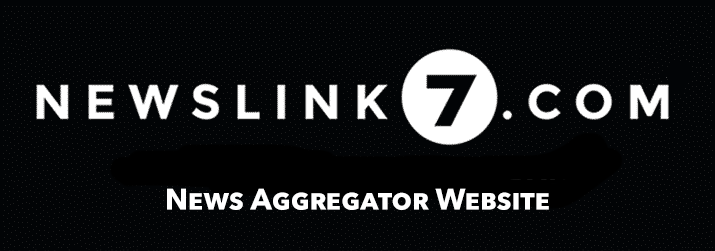North Korea’s Revelation of Uranium Enrichment Facility and Kim Jong Un’s Call for Expanded Nuclear Arsenal: A Momentous Event
In a rare move, North Korea publicly displayed its nuclear ambitions by unveiling images of centrifuges used to produce fuel for its atomic bombs. The announcement came as North Korean leader Kim Jong Un visited a uranium enrichment facility, urging the production of more weapons-grade material to bolster the nation’s arsenal.
Kim’s Visit and Rare Public Display
The report, issued by North Korean state media, detailed Kim’s visit to the country’s Nuclear Weapons Institute and a production base for weapon-grade nuclear materials. Accompanying the report were the first-ever photos of North Korea’s uranium enrichment centrifuges, offering a rare glimpse into the regime’s nuclear program. The images show Kim walking between rows of metal centrifuges. However, no information was provided on the exact location or date of the visit.
Kim emphasized the need to boost the production of nuclear materials, framing the nuclear arsenal as essential for defense and potential preemptive attacks against the U.S. and its allies. He denounced what he called “anti-DPRK nuclear threats” from “U.S. imperialists-led vassal forces,” asserting that North Korea’s nuclear stockpile is crucial for confronting these threats.
South Korea Condemns North Korea’s Actions
In response, South Korea condemned North Korea’s display of its uranium enrichment facility, reaffirming its stance that Pyongyang’s nuclear ambitions are unacceptable. South Korea’s unification ministry stated that it would never recognize North Korea as a nuclear-armed state.
Uranium Enrichment and Expansion at Yongbyon
Analysts believe North Korea has several uranium enrichment facilities, with its leading site at the Yongbyon Nuclear Scientific Research Center. Satellite imagery has indicated recent construction at the site, suggesting an expansion of its uranium enrichment capabilities.
Uranium enrichment involves increasing the concentration of uranium-235, a process vital for creating nuclear fuel. International Atomic Energy Agency chief Rafael Grossi recently reported observing activity consistent with a functioning reactor and enrichment facility at Yongbyon, indicating that the site is operational.
New Centrifuges and Increased Nuclear Arsenal
Kim Jong Un called for an “exponential increase” in North Korea’s nuclear arsenal, stressing the need to boost the number of centrifuges used in uranium enrichment. The photos of the centrifuges revealed what appears to be a newer, more advanced type of centrifuge, suggesting North Korea has developed its own technology to enhance uranium separation capabilities.
Nuclear expert Lee Sang-kyu from South Korea’s Korea Institute for Defense Analysis noted that the new centrifuges are smaller and more compact than previously thought, which could increase North Korea’s ability to produce highly enriched uranium for weapons. Using a cascade system, where centrifuges are interconnected, also suggests North Korea’s enrichment capabilities are more sophisticated than previously assumed.
Strategic Shift Toward Uranium-Based Nuclear Weapons
Analysts believe that North Korea is increasingly relying on uranium for its nuclear weapons program, allowing the regime to scale up its weapons production more easily than relying on plutonium. Ankit Panda of the Carnegie Endowment for International Peace highlighted this shift, noting that tactical nuclear weapons may be built primarily with uranium cores.
Foreign Insight and Potential U.S. Impact
Although North Korea has allowed limited foreign access to its enrichment facilities in the past, Friday’s announcement marks the first time that photos of its centrifuges have been made public. Jenny Town of the Stimson Center noted that this disclosure demonstrates the advanced state of North Korea’s enrichment capabilities, potentially signaling to the U.S. that denuclearization is no longer feasible and that North Korea should be recognized as a nuclear state.
Experts, including Hong Min from the Korea Institute for National Unification, believe that North Korea’s timing may be intended to influence U.S. elections and pressure the next administration into policy changes regarding Pyongyang.
Strengthening Ties with Russia
In a related development, top Russian security official Sergei Shoigu met with Kim Jong Un on Friday to discuss bilateral and international issues, marking the latest sign of deepening military cooperation between North Korea and Russia. Analysts have noted that Pyongyang continues to supply Moscow with weapons, including ballistic missiles, some produced as recently as this year.
Additionally, Kim oversaw the test launch of a new 600mm multiple-launch rocket system earlier this week, which analysts suggest could be intended for export to Russia amid their military cooperation.
North Korea’s Growing Nuclear Arsenal
Estimates regarding the size of North Korea’s nuclear arsenal vary, but experts agree that the country has made significant progress. The Federation of American Scientists reported in July that North Korea may have produced enough fissile material for up to 90 nuclear warheads, with approximately 50 likely assembled, indicating a growing nuclear threat.
With Kim Jong Un’s push to expand uranium enrichment capabilities and boost North Korea’s arsenal, the international community remains on high alert, while denuclearization prospects appear increasingly dim.



